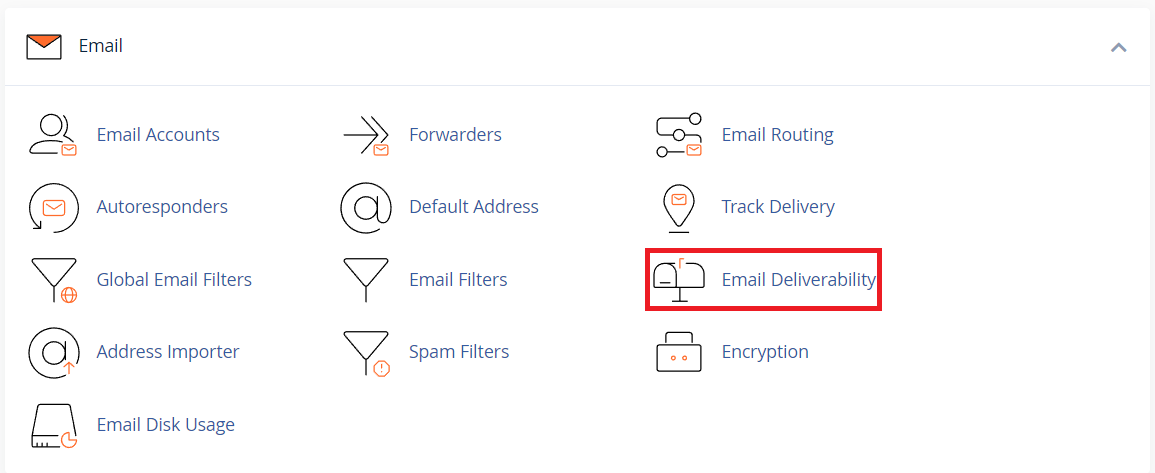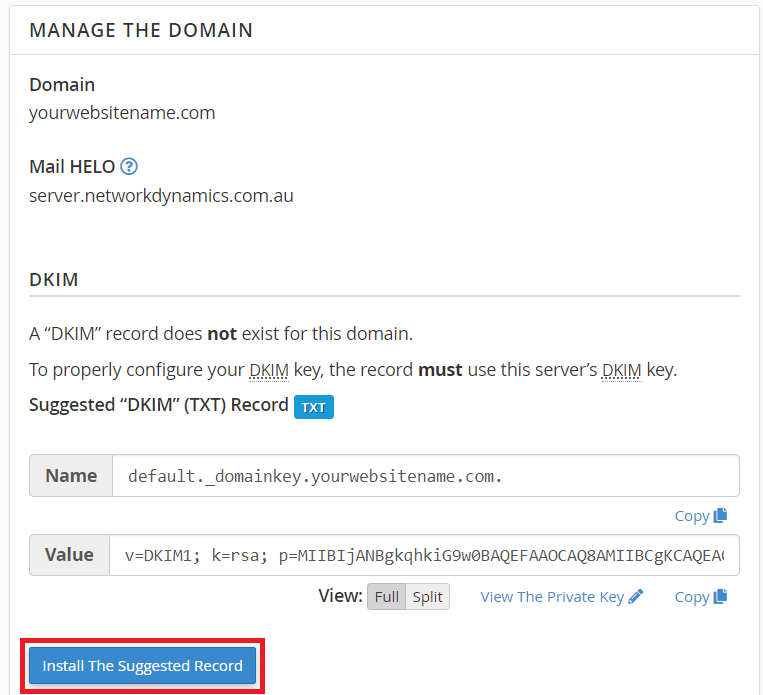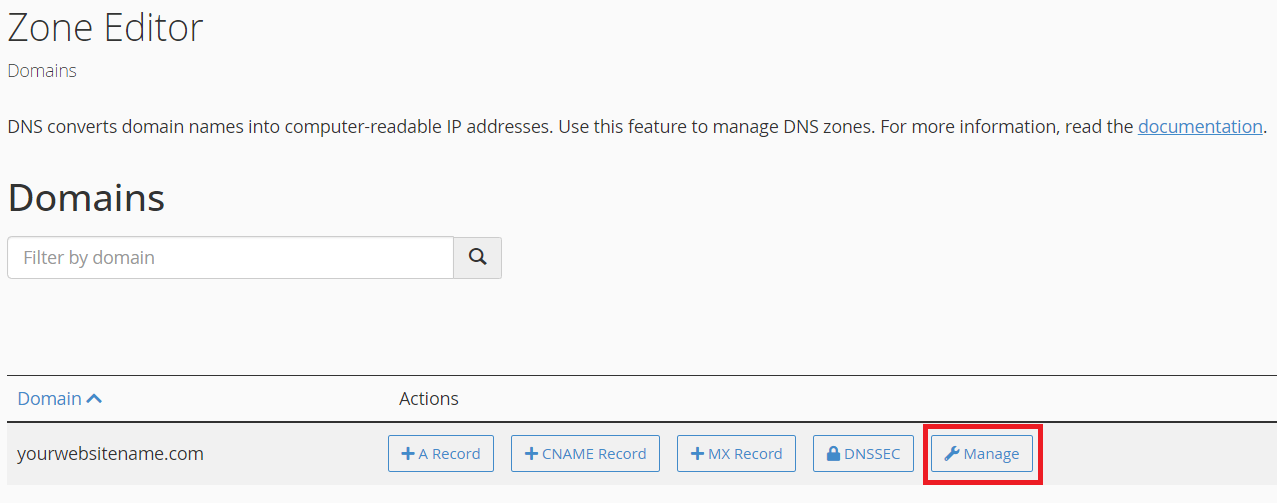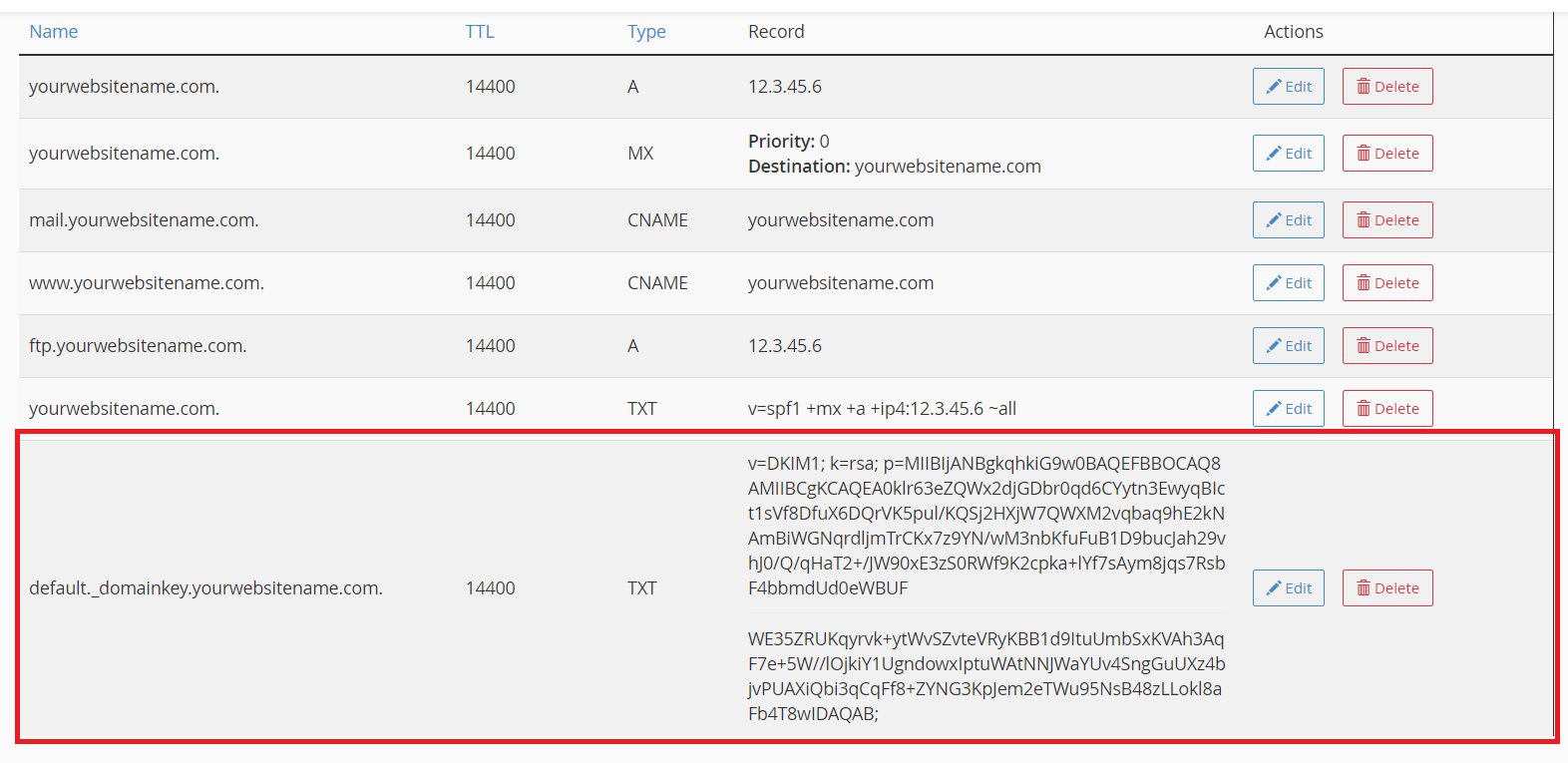This topic explains the process of adding a DKIM to your DNS Zone within the cPanel service. To follow the steps, you will need to be logged into your cPanel account. If you’re unsure how to access your cPanel service, please follow this guide before continuing: How do I Login to cPanel?
DKIM is a method used to verify that an email message was actually sent by the domain it claims to be from and that the email content hasn’t been tampered with during transit. Essentially, it adds a digital signature to your emails. This signature acts like a unique seal. As a result, when someone receives your email, they can check the seal to ensure it hasn’t been broken or altered.
Generate and Install DKIM record Keys (if you are using your network dynamics hosting account as an email):
1. Login to cPanel
2. After accessing cPanel, proceed to navigate to the ‘Email‘ section and click on ‘Email Deliverability‘.

3. Click the ‘Manage’ button next to your preferred domain name on the left side.

4. You will now see your DKIM records. You can also click the ‘Install The Suggested Record’ button, and it will automatically install your DKIM record in your DNS zone.

5. After it says ‘successfully installed’, you can return to cPanel. Then, navigate to the ‘Domains’ section and click on ‘Zone Editor’.

6. Click on ‘Manage’ for your preferred domain name.

7. Next, scroll down and search for the keyword ‘default._domainkey’. You will now see that your DKIM is installed.

To Manually install your DKIM to DNS:
1. Go to cPanel home page
2. To continue, navigate to the ‘Domains’ section, and click on ‘Zone Editor’.

3. Click on ‘Manage’ for your preferred domain name.

4. To proceed, add a new TXT record with the DKIM public key you obtain from the email deliverability section above. Specifically, the record name should look like “default._domainkey.yourwebsitename.com.” The value begins with “v=DKIM1; k=rsa; p=yourkeyhere”.

5. Once you have entered your DKIM name and value, click ‘Save Record’.

It may take some time for these changes to propagate across the internet.
Once these steps are completed, your emails will be signed with a DKIM signature. Consequently, this helps recipients verify the authenticity of your emails.
